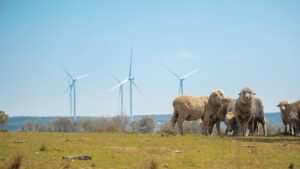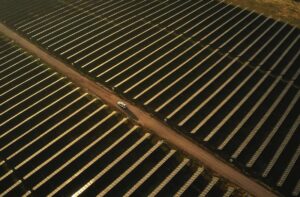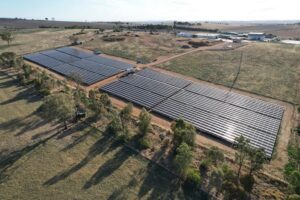The West Australian electricity utility Synergy caused a storm of controversy earlier this month week when its chairman, Lyndon Rowe, suggested hitting solar households with higher charges, a sort of “solar tax.”
Synergy, of course, is not the only one. Networks in South Australia and in NSW have considered charging higher network fees for solar households, and a similar proposal is being mooted for Queensland.
Indeed, unavoidable network fees are rising across the country for everyone. Most networks are seeking to boost fixed charges in response to the fact that consumers are using the grid less – due to a mixture of rooftop solar, energy efficiency, and bill shock.
Mark Byrne, from the Total Environment Centre, had a terrific explanation of what NSW distributor Ausgrid is up to in this piece we ran a few weeks ago.
But here’s another story of why the networks are so keen on hitting consumers with higher bills, taken from the presentations of Rowe and Matt Zema, the head of the Australian Energy Market Operator which has now taken over the running of the WA grid.
It’s a story of how networks spent way too much money expanding their grid, and why they wand the retailers like Synergy who have to try and pass on those costs want consumers to pay for their mistakes, and not the owners of the networks ….
So ….. in the beginning, there were great expectations. The incumbent energy industry made very optimistic forecasts about the use of energy. In 2010, they expected big growth in demand (green line in graph below), but slowly wound down those forecasts. In the end, there was barely any growth at all.
But based on those optimistic forecasts, industry members built a lot of extra capacity. By the time they realised their forecasts were wrong, there was about 1,000MW more capacity than was needed.
And that wasn’t because there was a lot of new wind farms (in green below) or solar. Most of it came in diesel and coal plants – the two most polluting technologies.
And because of WA’s bizarre capacity market mechanism, some of these plants will never be switched on, but will still be paid to stand by for an event that will never materialise. The bill gets passed on to the consumer.
And because of the rising bills, including the costs of a super-sized grid that was also expanded on the basis of those mistaken demand forecasts, many households decided to invest in rooftop solar, first as the result of a high feed-in tariff, but eventually because it cut the bills.
And this is what that has done to peak demand, pushing it back from 3pm to after 4.30pm, and reducing the size of the peak by a considerable margin, meaning that the extra capacity in peaking plant and network size was not needed. Still, despite this, the networks try to argue that solar does not reduce peak demand, and should be hit with higher charges.
To cap things off, the government tried to hide the cost of building all those generators and network upgrades by subsidising the cost of electricity to consumers. Even now, each household pays around $328 less than the actual cost.
The fact that solar means that they will use the grid a lot less than they had means that Synergy will get around $900 less revenue a year from a solar households. The addition of storage expands that revenue loss by a further $400.
So Synergy and the network owner in Western Australia Western Power looked at what customers in other networks paid for their supply charges and found, to their horror, that the customer pays a lot less than households in the eastern states.
That’s why they want to boost fixed charges. And what will be the result of that? Well, solar PV and battery storage costs are going to fall, and that will increase the options for consumers. So much so, that even energy minister Mike Nahan conceded that rooftop solar will meet all daytime demand in the state within a decade, and will force out coal generation.
So we go back to the start of Rowe’s presentation, and this graph below about the failure of Kodak to adapt to new technology and the “gale of creative destruction.”
What would you do?















